In this Kit (ConvertKit) review, I’ll share my personal experience using this platform.
I’ll cover everything from what makes it stand out to the frustrations I’ve encountered along the way.
Truth be told, there are things I absolutely love and also aspects that drive me crazy (and have me occasionally peeking at alternatives).
By the end of this review, you’ll know exactly whether Kit is the right choice for you.
Quick decision

What do I like? 👍
- User-friendly interface: I think a straight forward interface with easy to use UI, yet highly powerful automation builder is the huge advantage with Kit.
- Advanced subscriber management: Unlike other email marketing softwares, the subscriber system is tag-based not list based. It adds flexibility when it comes to segmentation. You can send hyper-targeted emails with tags which in turn improves deliverability.
- Excellent deliverability: I’ve never had issues of poor deliverability with Kit.
- Visual automation builder: The automation builder offered by Kit is very advanced when compared to others which lack flexibility or outdated.
- Cost-effective subscriber counting: The charge is based on the number of unique subscribers you have (you won’t get charged for duplicate subscribers like MailChimp and Aweber)
- Seamless WordPress integration: As Kit is specially made for bloggers, they make WordPress integration very easy with embed codes and forms.
- Personalized email capabilities: You can make use of powerful merge tags to personalize your emails
- Campaign optimization features: You can easily auto-resend your broadcasts to the people who have not opened your campaign.
- Extensive integration options: They have great integrations with the majority of the digital marketing platforms and tools. They also have a powerful Zapier integration in place.
What I don’t like? 👎
- Pricing concerns for growth: Pricing escalates quickly with subscriber count, which may not suit larger lists or established businesses seeking more flexibility.
- A/B testing limitations: Testing is restricted to subject lines only (no sender name, email content, or timing A/B testing options), with just 2 variations available. This is a significant drawback for marketers wanting to test multiple subject lines to optimize performance.
- Limited design options: Form and template customization options are basic, and advanced styling usually requires custom CSS or HTML.
- Basic template system: I think more customization options can be added for templates. For making some changes you need to dig in the HTML and create new templates.
- Insufficient inactive subscriber management: By default, Kit adds the subscribers who are inactive to the “cold” tag. But there’s little you can do about it when it comes to customization.
- Limited ecommerce capabilities: Compared to competitors like ActiveCampaign, Klaviyo, and Mailerlite, Kit falls short in ecommerce integrations, reporting options, and customization. Users with ecommerce or advanced automation requirements may find Kit inadequate.
Bottomline
If you’re a blogger, content creator, or online business owner looking for an email marketing tool, Kit delivers where it matters most. The tag-based subscriber system, excellent deliverability, and intuitive visual automation builder make it stand out from the crowd.
That said, it’s not perfect. The limited A/B testing options, basic template designs, and pricing that increases quickly with your subscriber count might have you looking elsewhere if these features are deal-breakers for your business.
When starting out, you may have 1000s of subscribers but haven’t monetized your list yet.
In this case, those pricing jumps can feel pretty painful for your budget.
For most content creators though, the pros outweigh the cons, making Kit a solid choice that grows with your audience.
Interface
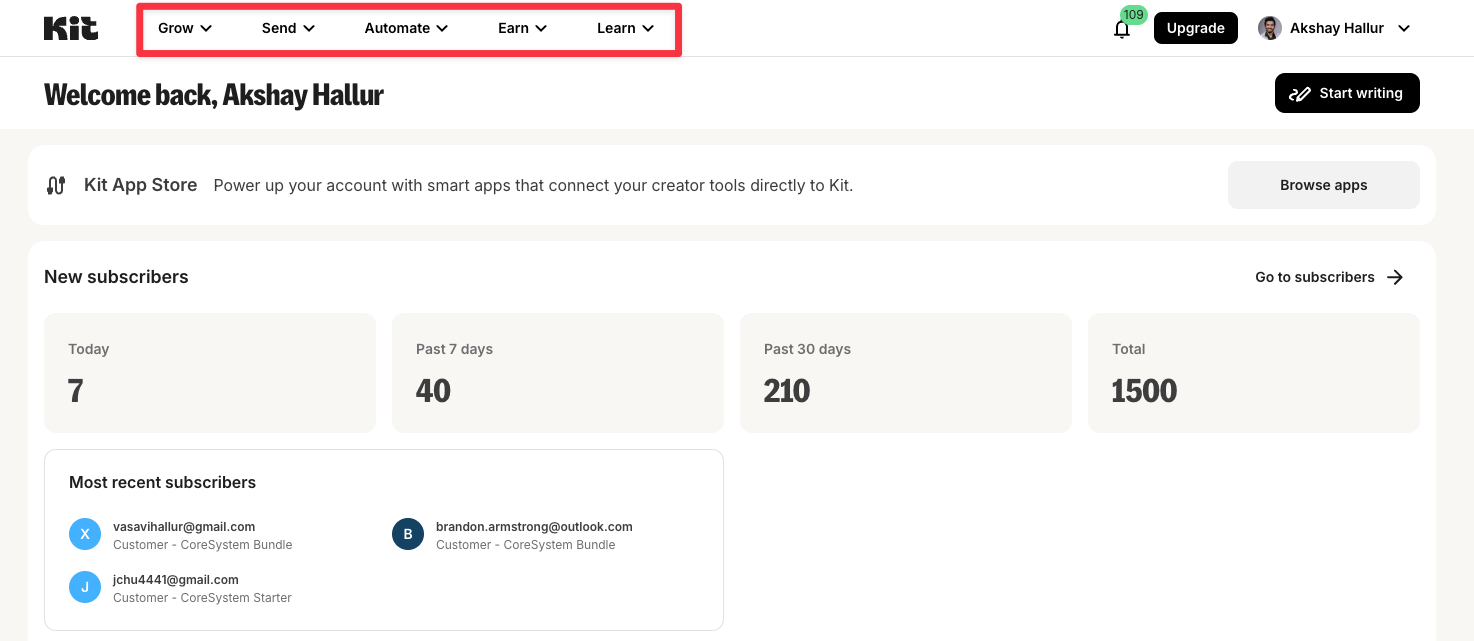
The interface of Kit is pretty straightforward.
On the main screen, you’ll see the number of subscribers you have, growth graph, click rate, total emails sent, and also options to import the subscribers.
You can switch the graph from growth to net subscribers.
You can search the subscribers and also edit or delete the existing subscribers.
The complete Kit is divided into 5 sections:
- Subscribers
- Automations
- Forms
- Sequences
- Broadcasts
The options are present in the relevant sections and the UI is designed very intuitively.
However, there are some minor quirks with Kit that I find frustrating, including the tag management system.
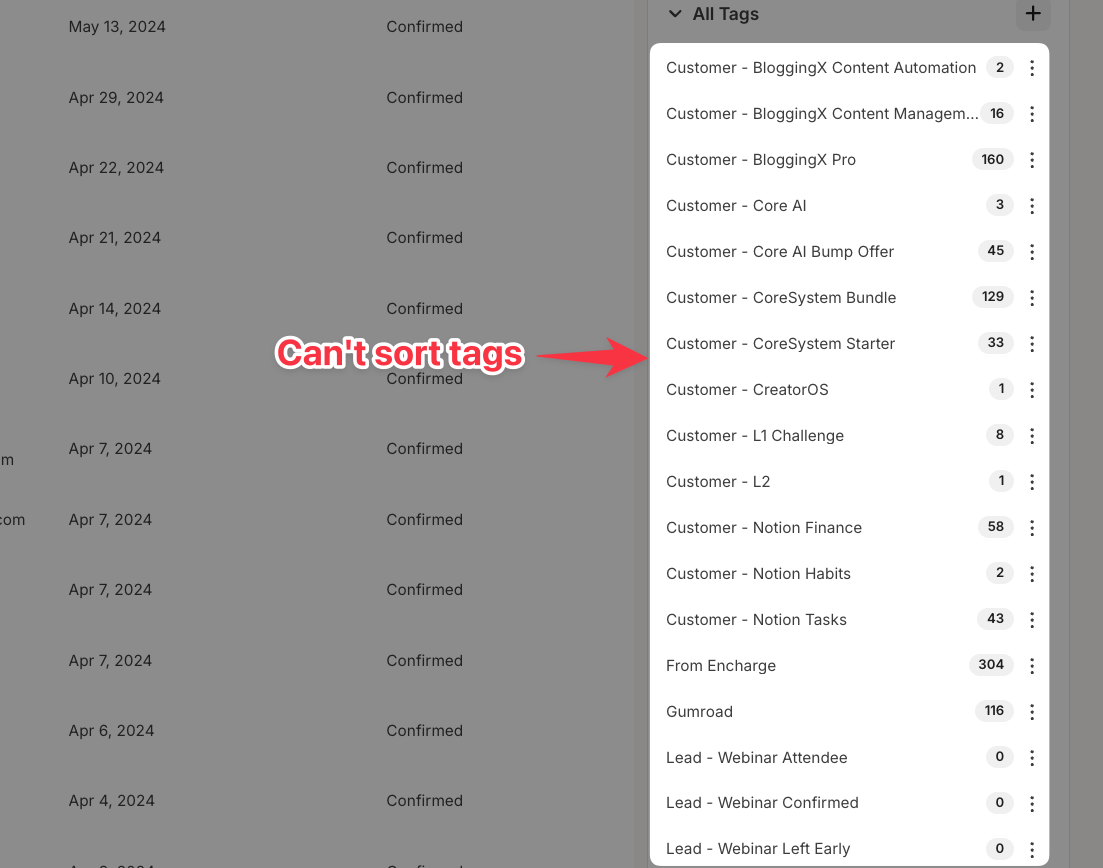
For example, if you have a large list of tags for your subscribers, there is no way to reorder the tags, and their tag management system becomes cluttered and difficult to navigate. This becomes a real pain point when working with multiple campaigns or complex segmentation strategies.
Segmentation and tagging
Kit offers three powerful organizational tools to manage your subscribers effectively:
- Forms
- Segments
- Tags
Forms in Kit function as your entry points for subscribers.
Segments are Kit’s solution for broad subscriber categorization.
What makes Kit’s segments special is their flexibility – you can include subscribers from multiple forms in a single segment and modify your parameters anytime.
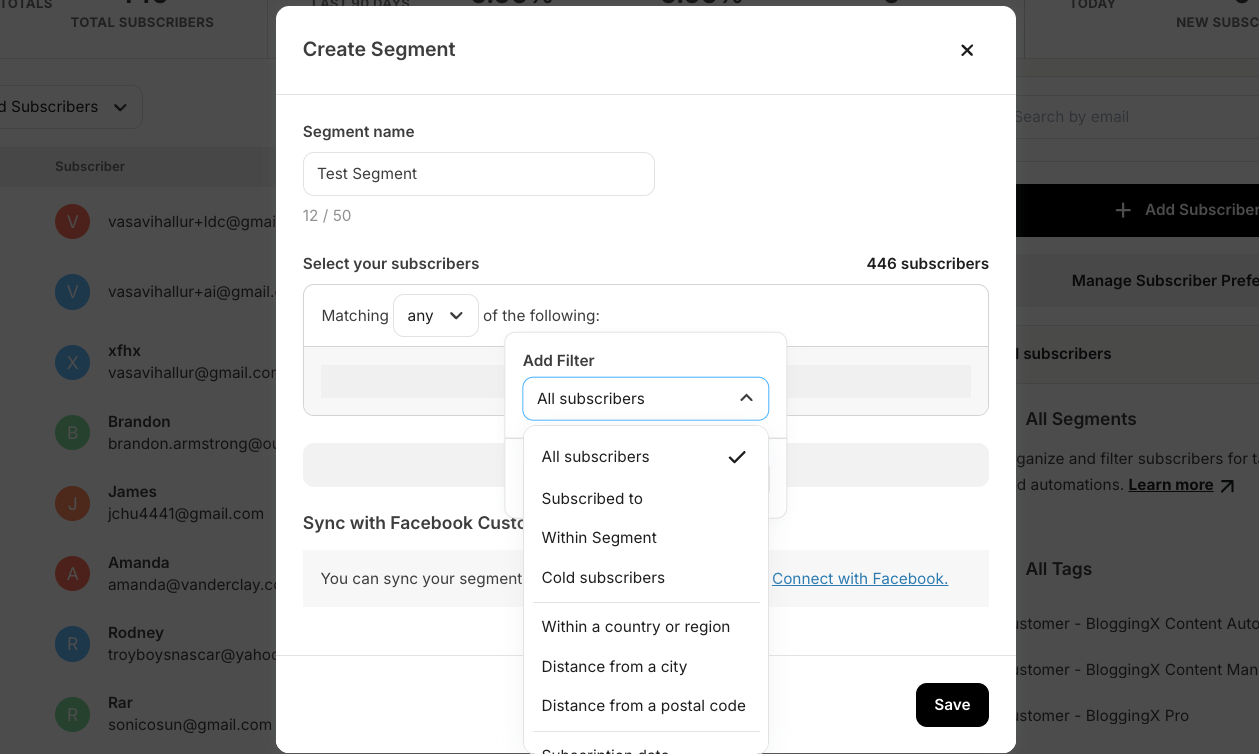
If you’re running a blog with multiple topics like I do, Kit’s segmentation is invaluable.
You can easily create separate segments for different content areas and target your emails accordingly.
Tags are where Kit truly shines compared to competitors. These are action-based labels that track subscriber behavior and engagement.

Kit’s tag-based system offers significantly more flexibility than the list-based approach used by many other email platforms.
This allows for hyper-targeted emails that improve both engagement and deliverability – a major advantage when building relationships with your audience.
Email broadcasts and templates
Kit provides just 6 simple pre-made templates. You won’t find those flashy, image-heavy email newsletter designs that platforms like MailChimp or ActiveCampaign offer.
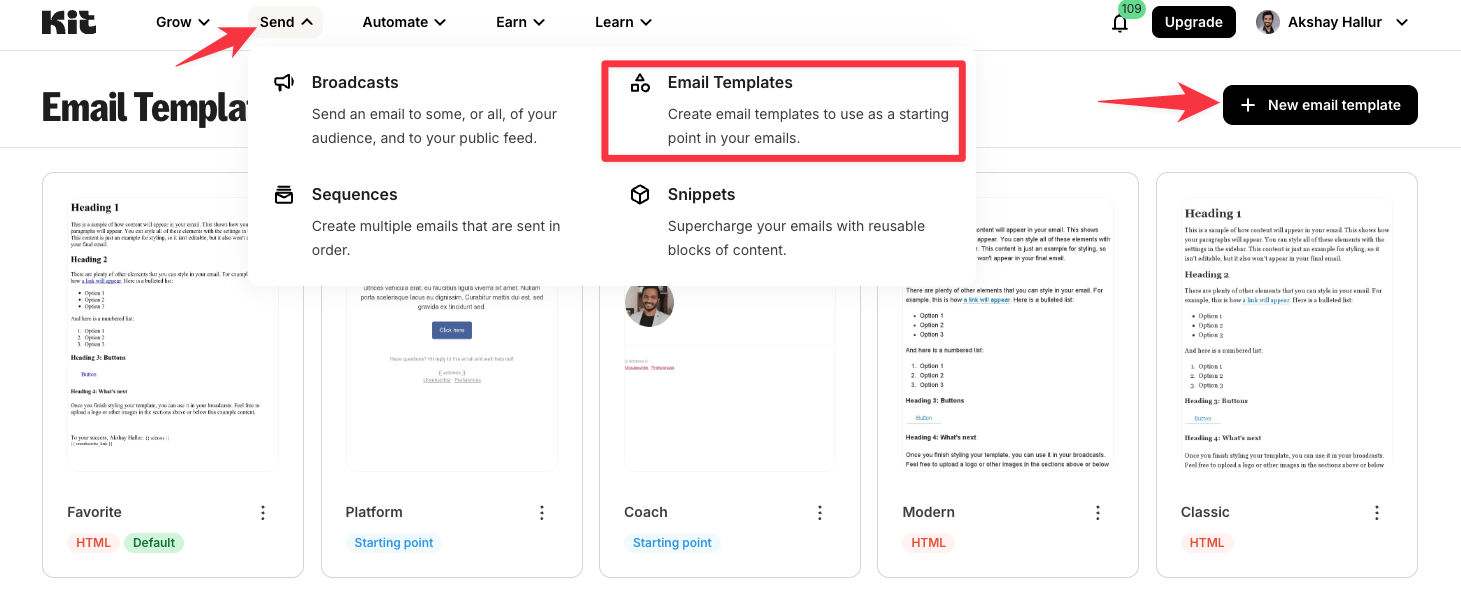
You can also create your own custom email template.

To create a custom email template, you’ll need to code in HTML and include variables from the right sidebar.
Most of the times you end up sending plain text emails.
Personally, I prefer this approach. Plain text templates actually improve deliverability rates.
During my time with MailChimp, I never used their flashy templates for this reason.
Now:
When creating a broadcast, Kit asks for your email address and lets you select your target audience.
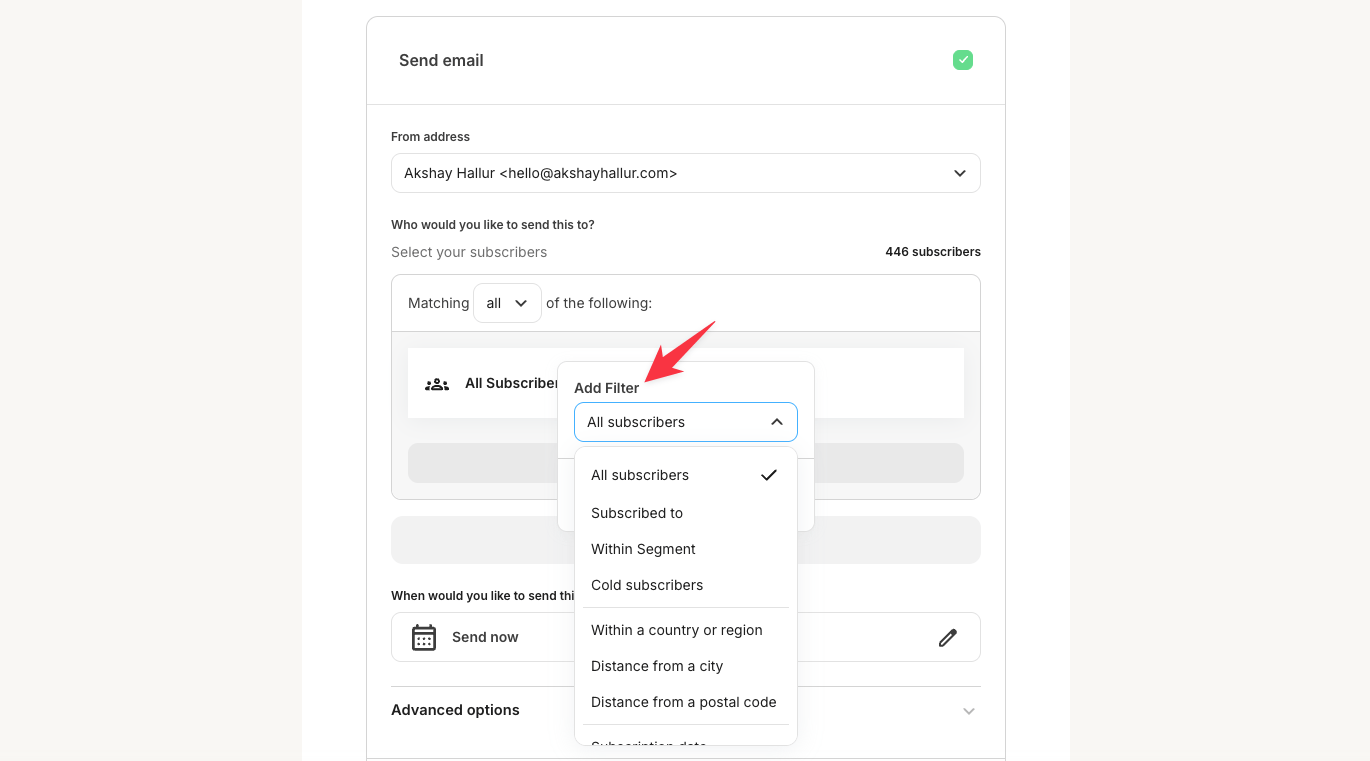
You can add filters or create filter groups for advanced targeting. It’s great that Kit allows you to select the recipients even before composing the email.

The email composer has the options for you to add links, bold text, italics, underlines, quotes, headings, modify font size, images, etc.
I highly recommend you to use only the plain text as it increases the deliverability of your emails a lot.

After adding a link in your email, you can add tags to the subscribers who click links.
You can set it up under “Automations” which I’ll discuss in the next section of this review.
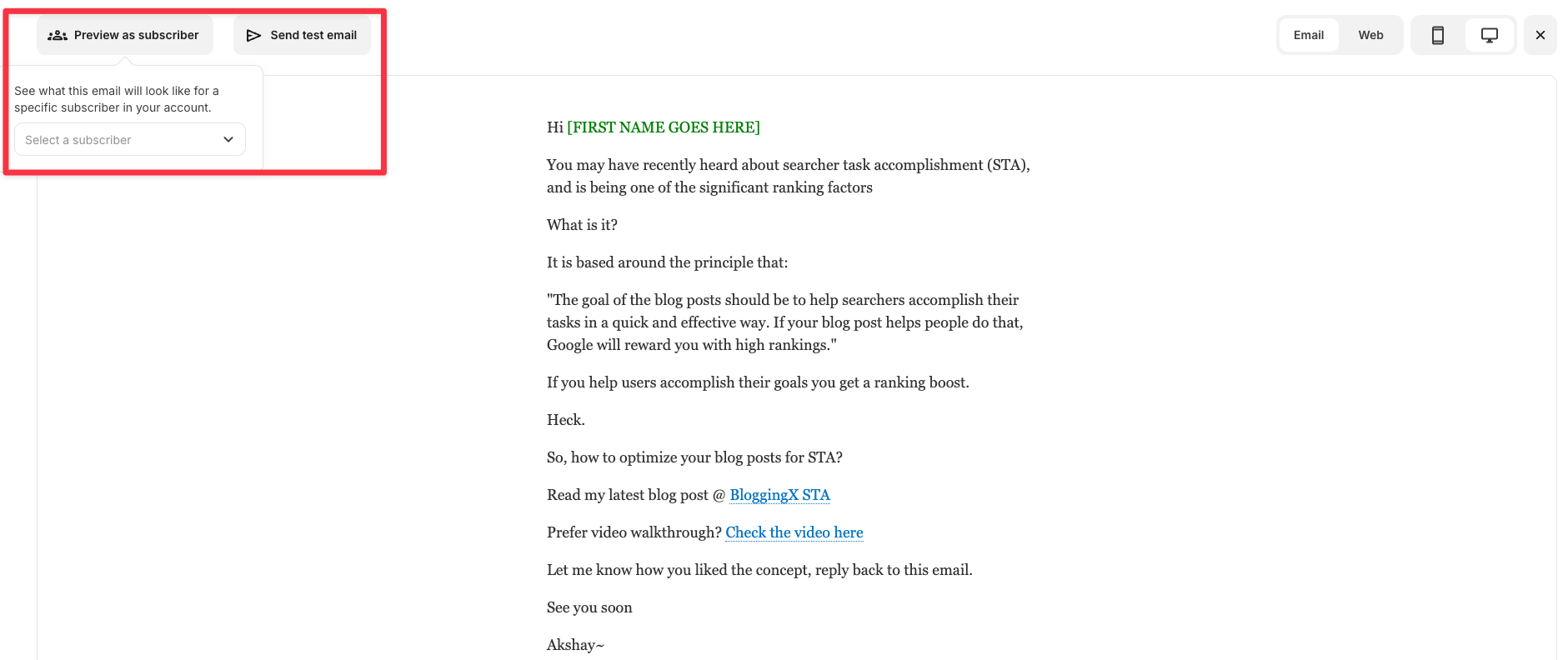
After you compose your broadcast, you can preview your broadcast as an email subscriber you have in your list.
This is extremely useful and prevents you from sending a test email to ensure that the merge fields have been replaced.
Now you can either schedule the send or send the broadcast immediately.
Automations
Kit comes with a very powerful visual automation builder. It ’s great to build automation workflows and feels so fluid.
First, you need to select a trigger for the automation to start working. You can have multiple triggers for an automation workflow.

After the trigger is selected, you can start building your automation sequence

For example, if you need to deliver a single ebook or a course for the people who subscribed to a form, you can do it by selecting the form as a trigger and start creating your email automation.
The side-panel email composer simplifies creating lengthy autoresponder sequences.
Unlike other tools where you must navigate between pages at each funnel stage, Kit’s approach is more streamlined.

Kit includes an “Automation Rules” section that lets you manage all your rules in one place.
This straightforward interface makes it easy to view, edit, or create automation rules across your campaigns.
A practical automation example: when someone joins your list, immediately send them an email asking what content they prefer.
For more complex email marketing automation needs, consider ActiveCampaign or Drip instead.
👎 Kit’s main limitation is creating complex user segments with multiple variables and defining specific actions based on user behavior.
A/B Testing
With Kit it’s possible for you to conduct A/B split testing of the subject lines and test which one performs better.
Every time you create a new broadcast, you can click on the A/B icon present next to the subject line field.
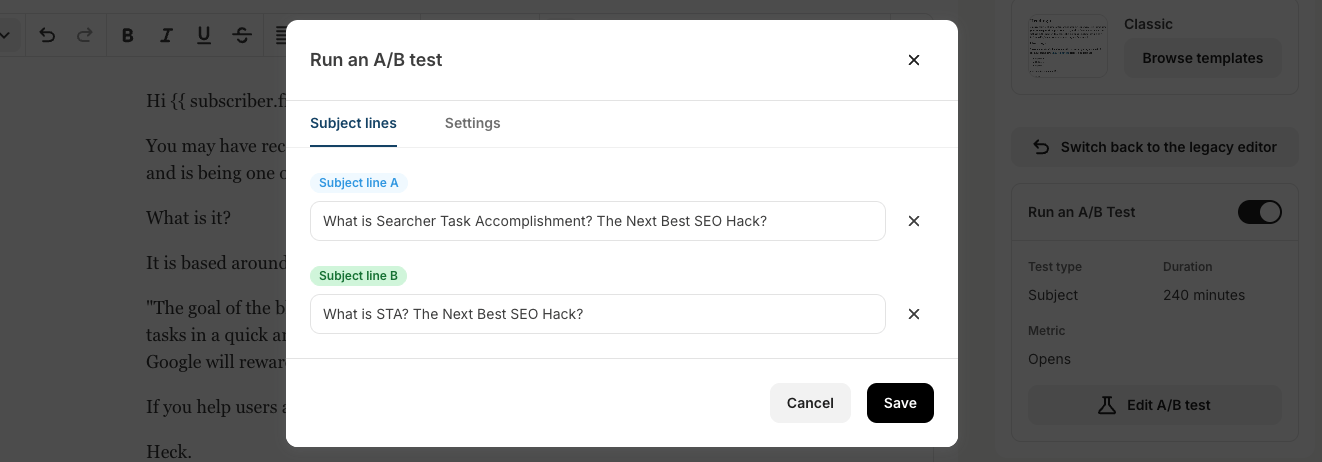
Here you need to just enter the two variations of the subject lines to test which one gets the more open rate.
👎 One of the limitations of the Kit’s A/B testing is the lack of testing the whole emails against each other, from names and also the send time.
I would think it’ll not be a major deal-breaker for most of the people as the subject line A/B testing is good enough.
👍 However, on a good note, Kit supports A/B testing in its Visual Automation Builder to help you identify the most optimal path.
Forms and landing pages
With Kit you can build landing pages and also lead capture forms to embed on your site.
To get started, just head over to the “Grow” section and click on “Landing pages and Forms” in your Kit account.
Here you need to select whether you need to create a form or a landing page.
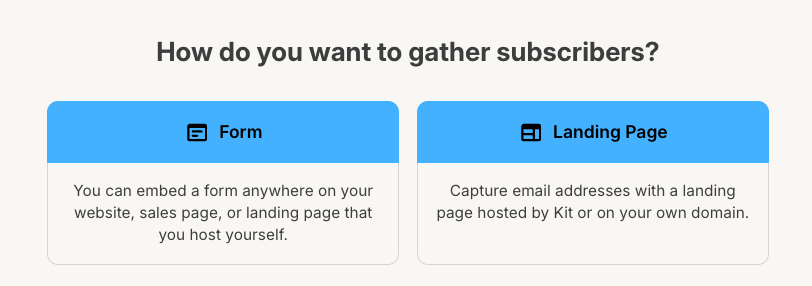
First, let us create a form.

Let me select a modal form and choose one of the available 9 templates.
As you can see, there are various customization options when it comes to forms. There are also various trigger options like scroll-based, exit-intent and time-based popups.

The forms functionality is fully-fledged and not barebones like that of some other email providers.
And also, there’s an embed code option that enables you to add the asynchronous Javascript to your WordPress or any other site easily.
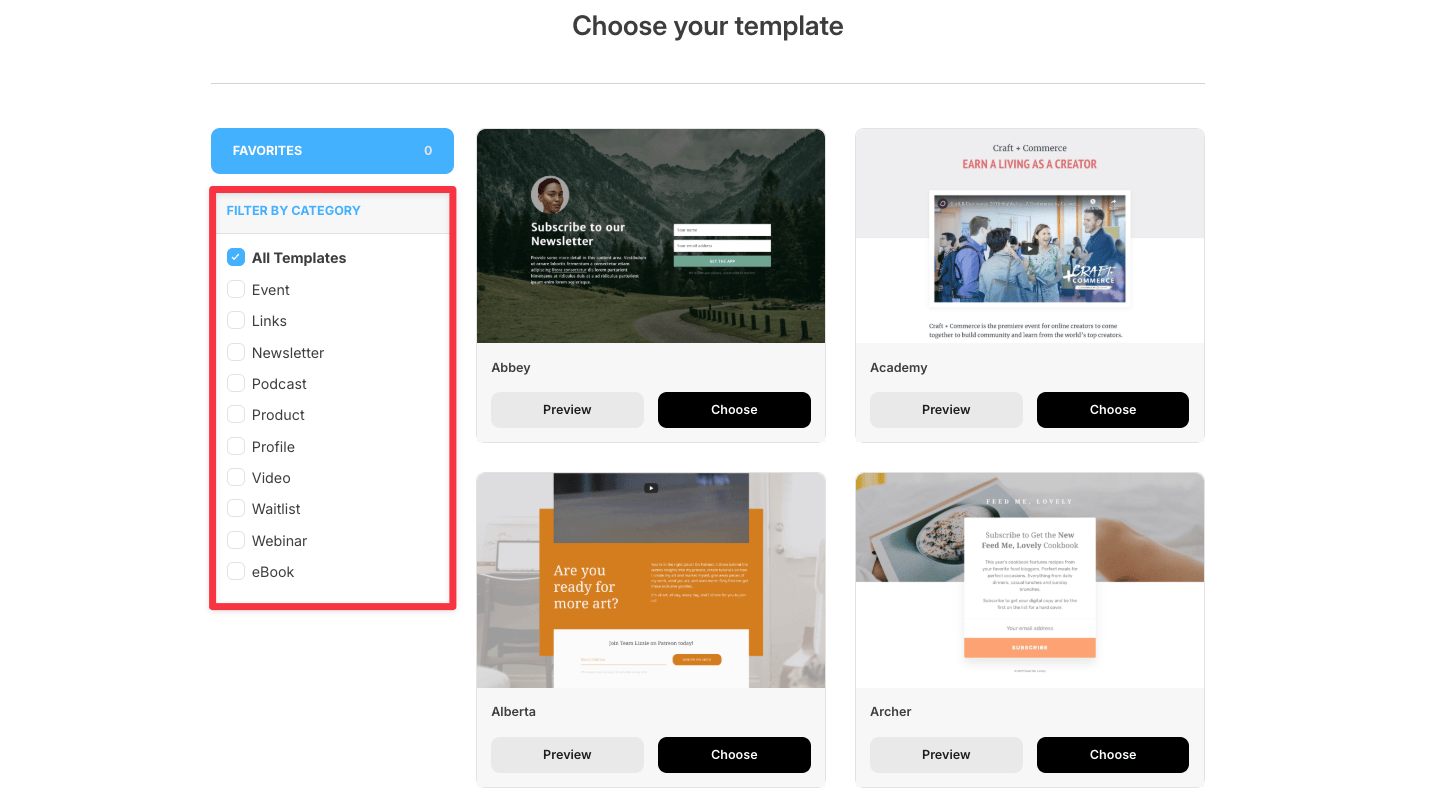
There are a variety of landing page templates that you can choose from.
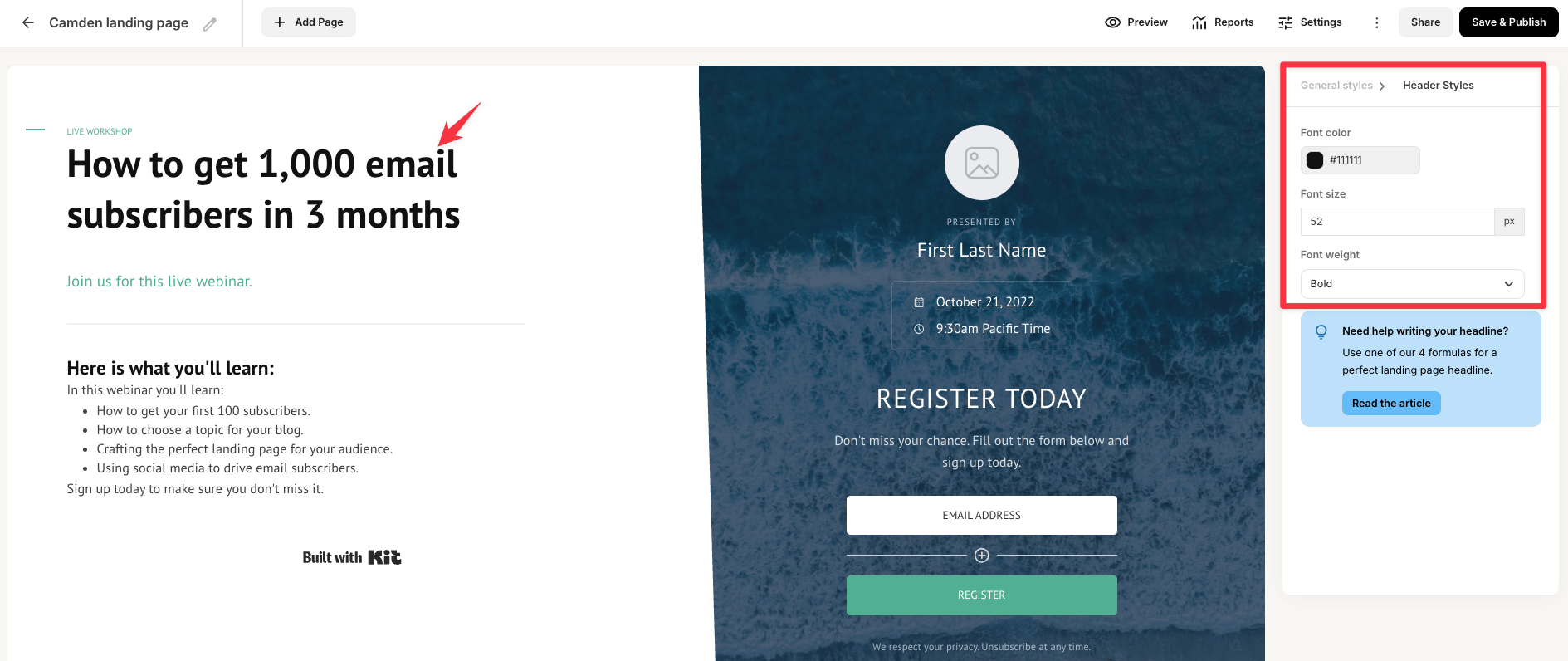
Similar to that of any landing page builder, you can modify many aspects of your landing page including colors, font size, and weight.

👉 Now, about the landing page: It’s quite feature-rich with a lot of building blocks ( focused on conversions). However, if you want more advanced web design options like parallax similar to Elementor or Webflow, you will be disappointed.
After you save the changes, you can grab the landing page link and promote it or use their plugin to host the page on your WordPress site.
Tracking & reporting
As you’ve noticed in the first section, Kit also displays the subscriber growth information in the “Subscribers” section of the app.
Kit does a great job of tracking the open rates and reporting the key performance metrics in the reporting section.

You can go to the individual forms and click on the reports link to display the conversion data of that report.
Here are some of the data and metrics Kit displays:
- Visitors
- Conversions
- Conversion rate
- Top referrers
- Others based on integrations
The reporting for broadcast is also available for you.

It includes key performance metrics like recipients, open rate, click rate, top links clicked, and also the number of unsubscribes.
You can also notice that there’s a button that says “resend to unopens” that enables you to resend the campaign editing the original email to those people who have not opened your original email.
Deliverability
Kit delivers better email deliverability than competitors by encouraging plain text emails instead of fancy templates that often trigger spam filters.
However, deliverability still has room for improvement, as emails sometimes land in the promotions tab.
For best results, regularly clean your list by removing inactive subscribers to maintain list health and boost deliverability rates.
Here are some of the tips to improve deliverability:
- Use custom domain
- Use SPF and DKIM records
- Don’t use overly promotional words
- Do list cleanup regularly
- Ask questions and encourage replies to your emails (right from the initial email itself)
As Kit has very strict regulations on whom they accept to use their product, often the deliverability rates are good.
Integrations
Kit integrates with a number of different apps and also has Zapier integration.

They have 90+ as of writing, in various categories like ecommerce, lead capture, webinar services, affiliate management, CRM, FB ads, and also Zapier to open a whole new realm of integrations. You can refer their integrations page for more info.
It is great that they add new integrations and features on a monthly basis.
They are one of the email marketing software who listens to what their customers tell and implement.
Pricing and support
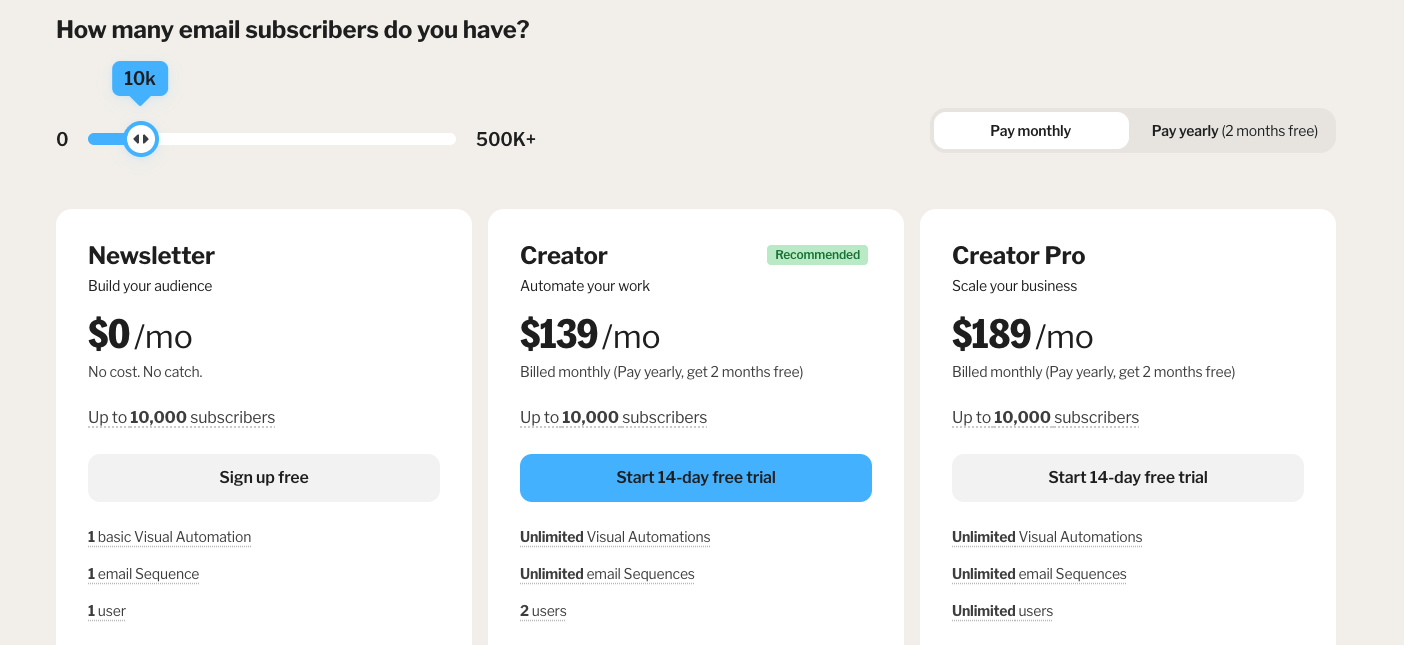
Kit has introduced a free newsletter plan that costs $0 up to 10,000 subscribers. However, one big limitation is it supports only one automation.
So most of the people end up going with the Creator plan that’s quite on the higher side if you have not monetized your list yet.
Now:
When it comes to support, they offer you 24x7x365 live chat and email support. Live chat is the most unique selling proposition for them when it comes to support.
They also have an extensive knowledge base, video tutorials and vlogs to refer and stay updated.
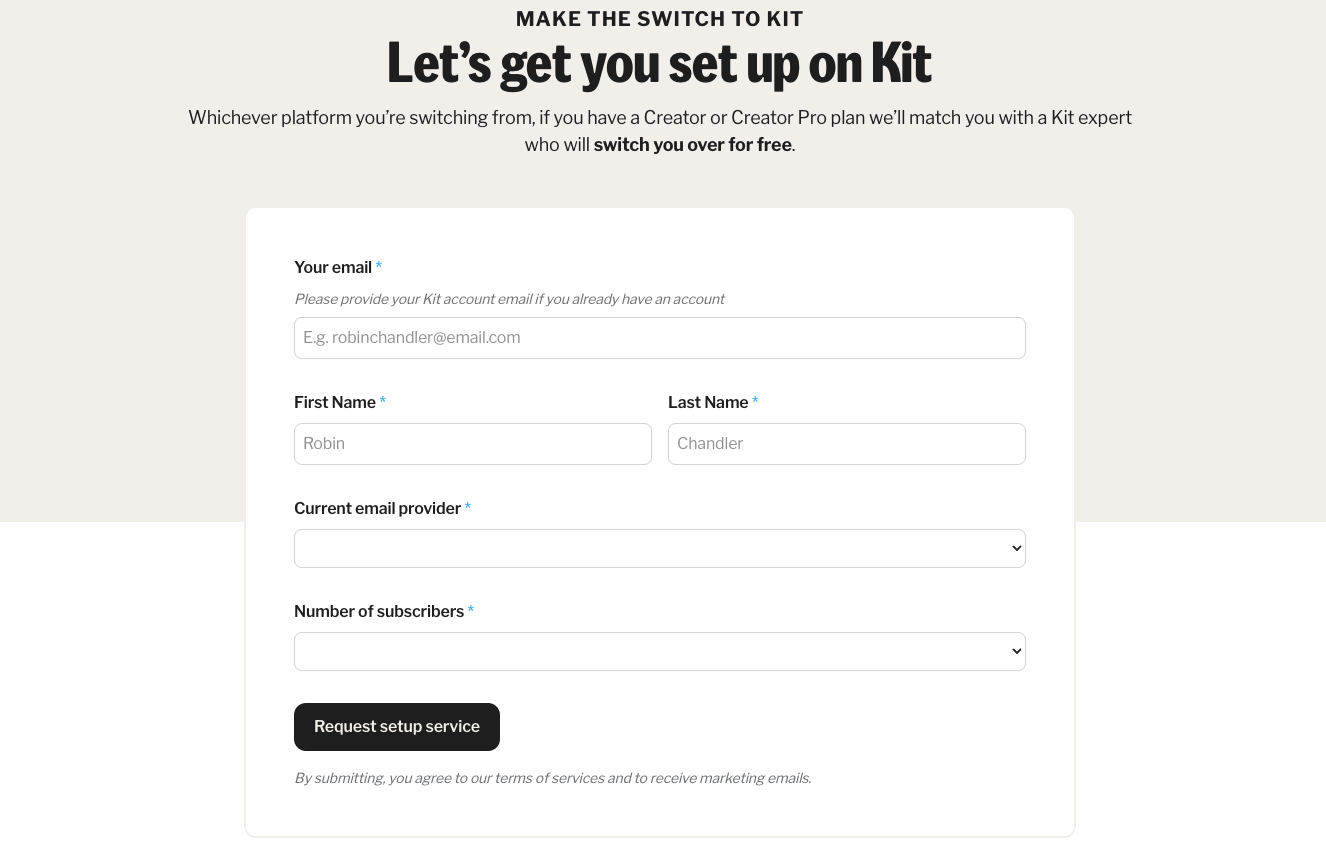
If you are migrating from any other email marketing software to Kit, they have their migration assistance system. You’ll be able to import your previous lists, subscribers, forms, automations, timeline, sequences, to Kit.
This is a great unique feature that Kit offers when compared to other softwares.
Kit FAQs
- Is there any trial offer available for Kit? Kit offers a 14-day trial for its new users. You can avail it here.
- What about the refund policy of Kit? They have a 30-days refund policy. So, if you are not satisfied with the tool you can issue a refund within a span of 30 days.
- How can I migrate to Kit? As I mentioned above you need to make use of their Concierge Migration service to export all the subscribers, automation, and all other data from any other email marketing tool to Kit.
- Does Kit allow affiliate marketing? Unlike ActiveCampaign, Kit allows you to do affiliate marketing but it has a strict policy towards spammers and promoting irrelevant offers.
- Can I send bulk emails? You can send bulk emails only to the people who have subscribed to your list and have granted you permission to send them emails.
- How good is Kit’s deliverability? Kit’s deliverability is better than other contenders like MailChimp. Most of the times emails will be delivered in the “updates” tab, and even in the “primary” tab if subscribers interact well with your emails. More info I’ve covered in the above sections.
- Is there any roadmap for Kit? They do have an actively maintained roadmap page which you can find here.
Is Kit Right For You?
Kit excels for independent content creators, coaches, and small businesses focused on building audience relationships. Its simplicity is both its greatest strength and limitation.
If you value ease of use and don’t need complex marketing automation, Kit offers excellent value. However, if you require advanced segmentation, complex automation flows, or manage multiple brands, you may find its capabilities limiting.
The best approach is to take advantage of their trial to determine if Kit aligns with your specific email marketing needs.







